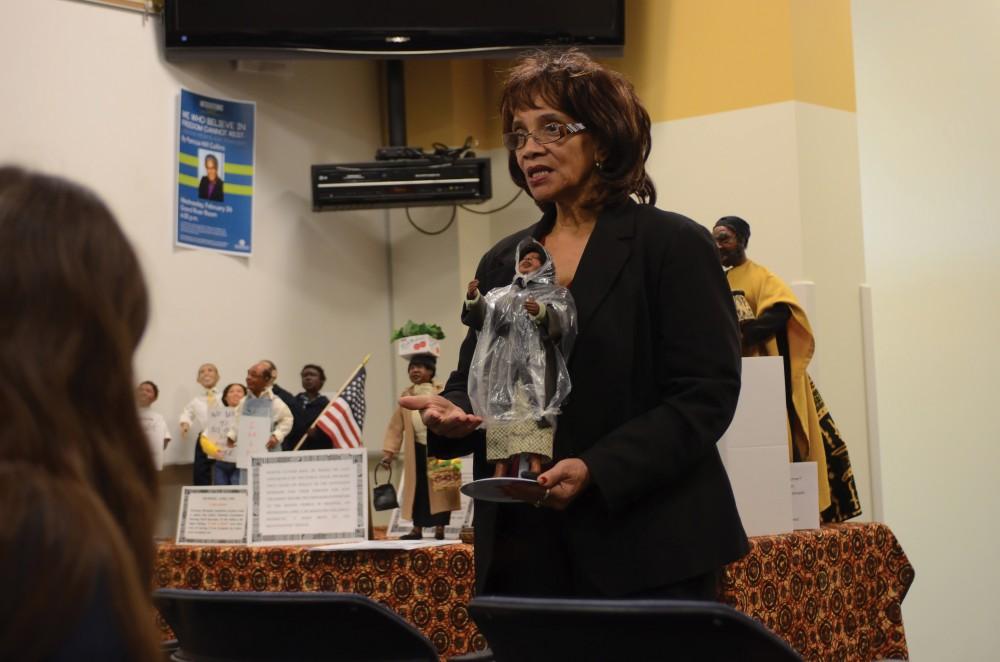Celebrating Black History Month through sculpture

GVL/Kevin Sielaff Historical doll sculptor and designer, Lena Newton, tells the story of important figures throughout African-American history through her realistic, clay representations of them.
Feb 27, 2014
Many students learn about black history through high school textbooks. Sculptor and designer Lena Newton learns by creating dolls.
As part of the Black History Month celebration, Grand Valley State University students gathered in the Office of Multicultural Affairs on Monday to hear Newton speak about the history behind her dolls, which include Rosa Parks, Martin Luther King, Jr., Barack Obama and Thurgood Marshall.
Newton started making the dolls because she was interested in learning more about stories from black history, which is not always taught in schools. She uses her dolls to teach people that no matter what their race is, their history is important.
“I want young people to understand that the unsung heroes that we don’t know about, and the heroes like Martin Luther King and Rosa Parks, they made a sacrifice for us that we have the freedoms that we have today,” Newton said. “And so that’s my main reason for using the dolls is to teach the young people, to get them to understand that your education is important. Somebody paid a price for you.”
Newton was one of the first African Americans hired to work for the government in Grand Rapids. She grew up in Tennessee in a time when racism, discrimination and segregation were prominent. Everything from schools to restrooms and drinking fountains were labeled either “Colored” or “White.”
“I went to segregated schools,” Newton said. “I grew up in the South and I know what it’s like to get on the back of the bus. I’ve been treated different because of the color of my skin.”
In response to her experiences, Newton started making dolls in the 1980s after taking some sculpting and doll-making classes. Since then, she has created about 100 total. She said the dolls are especially important because 2014 marks the 50th anniversary of the passing of the Civil Rights Act.
Bobby Springer, associate director of OMA, said black history is important because it is American history and should be treated as such.
“We learn a lot from history,” he said. “Blacks have played a major role in the development of this country. Just like today, sometimes you don’t know until you hear the story.”
GVSU history professor Louis Moore agreed that black history is American history. He added that this history, especially the Civil Rights Movement, is important because studying it gives people an idea of how far they have come since the days of slavery and Jim Crow.
“It is a constant reminder that on the one hand too often America has failed to live up to standards of democracy and equality,” he said. “On the other hand, individuals, especially African Americans, have struggled to ensure that justice and equality is for everyone.”
Moore explained that Carter G. Woodson, the “father of black history,” started the celebration first as Negro History Week in 1926 and then as Black History Month in 1976 because he wanted to show that blacks have made their mark on American history. Previously, black history had not been taught in most schools.
“The purpose of having Black History Month is not to create a segregated space in our minds or play identity politics, but to fuel further discussion and reflection,” he said. “Celebrating black history was a way to change the future. While we have seen great improvements, blacks still struggle to battle against the structural racism of the past and fight against poverty, underemployment, inferior schools and mass incarceration.”






















